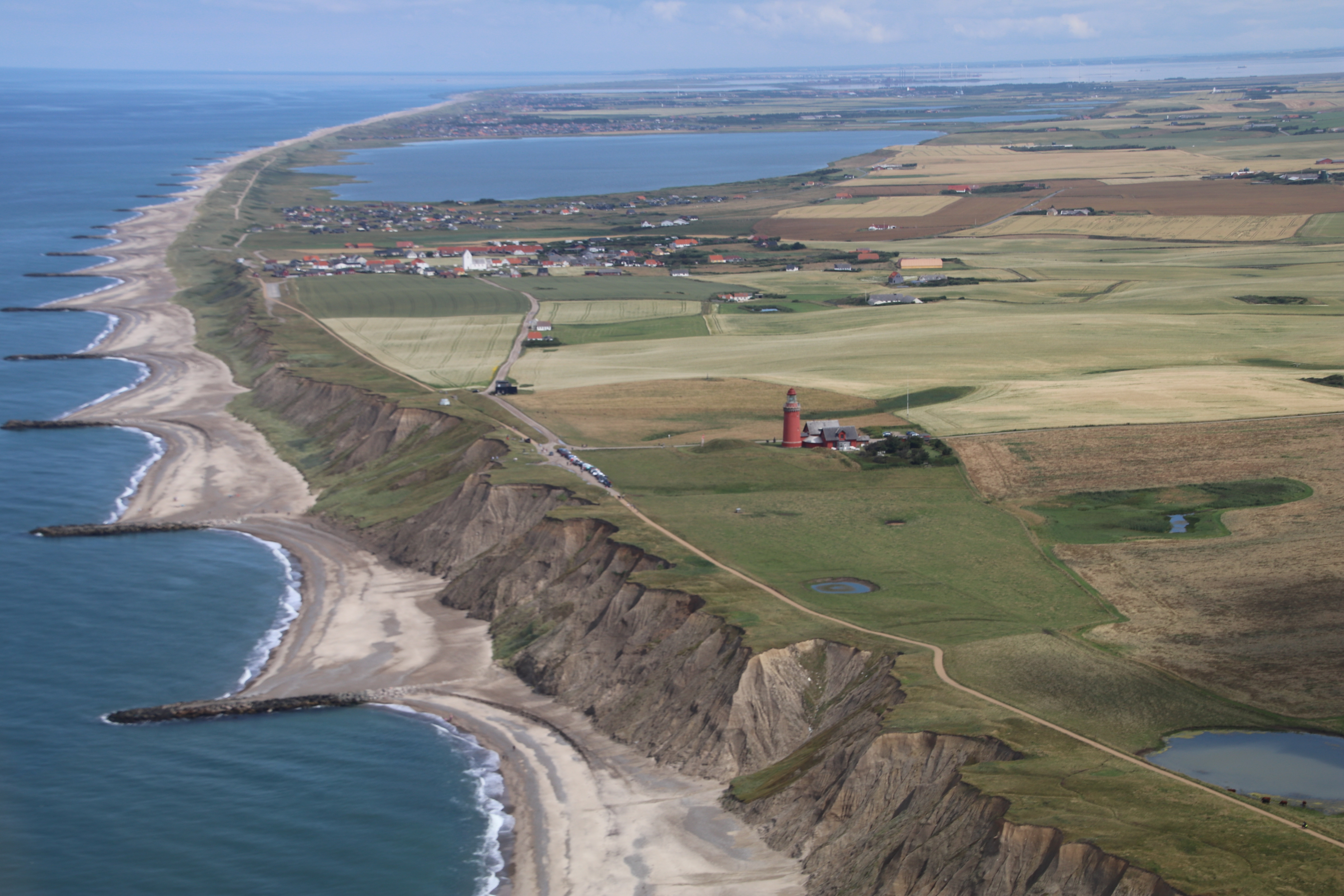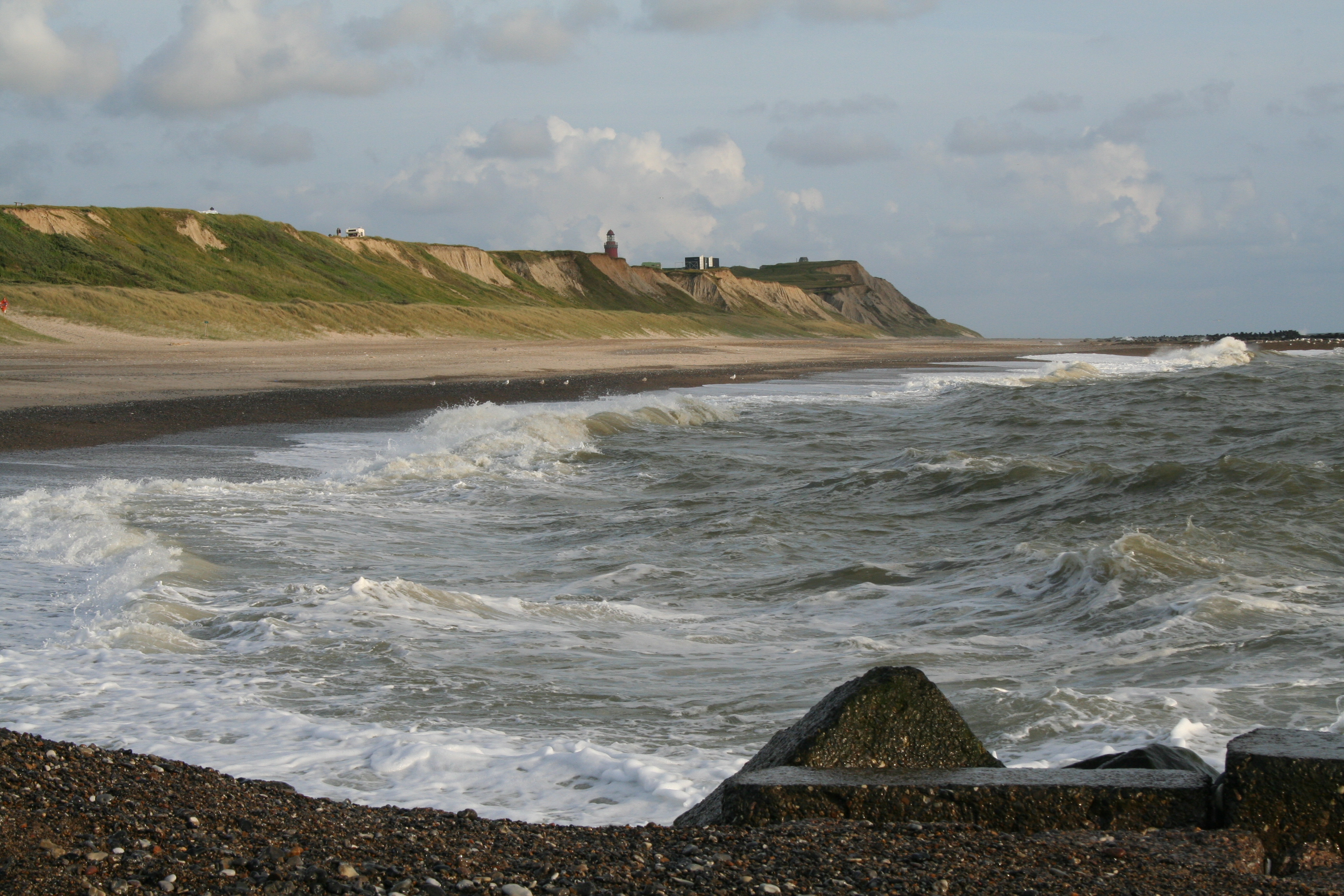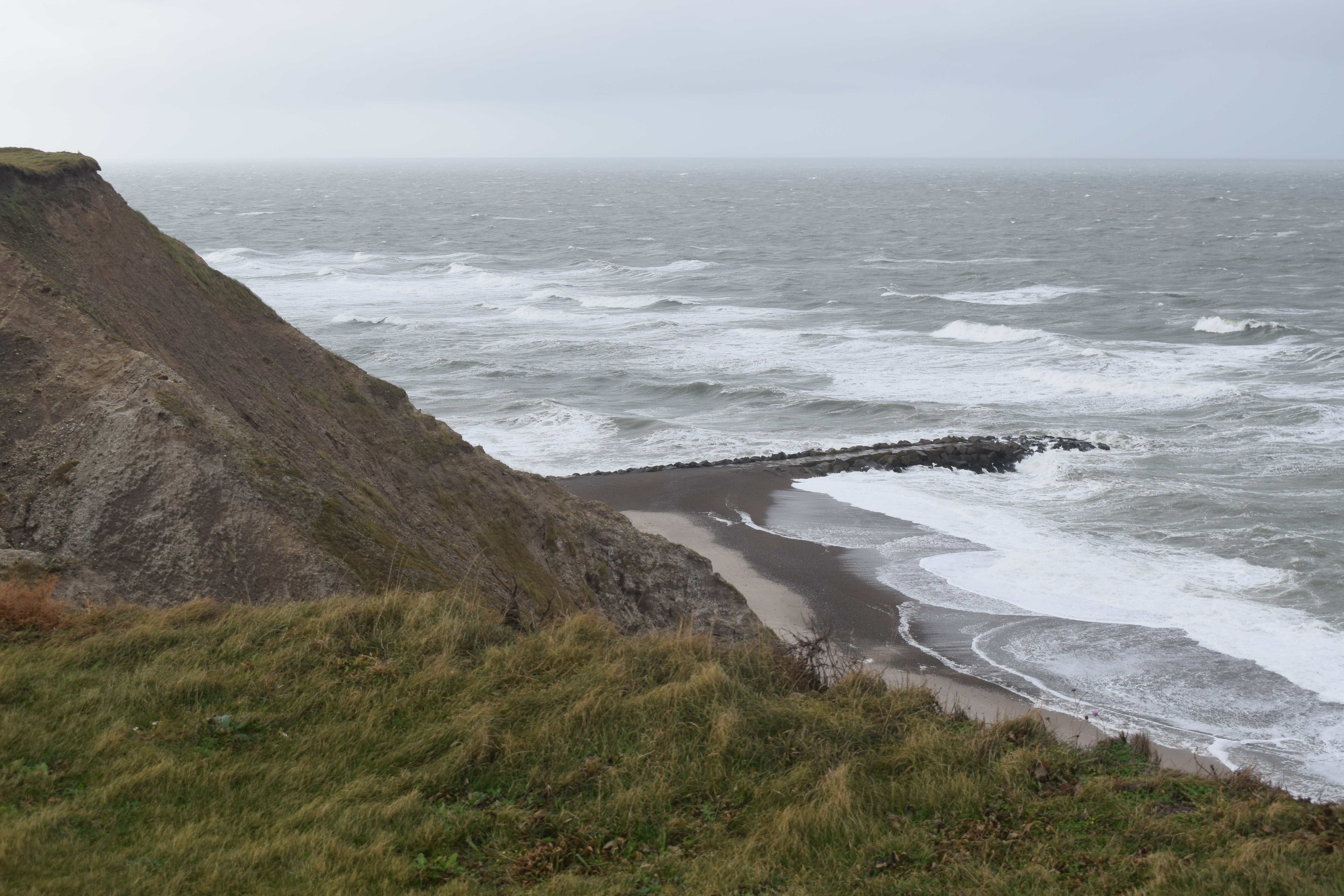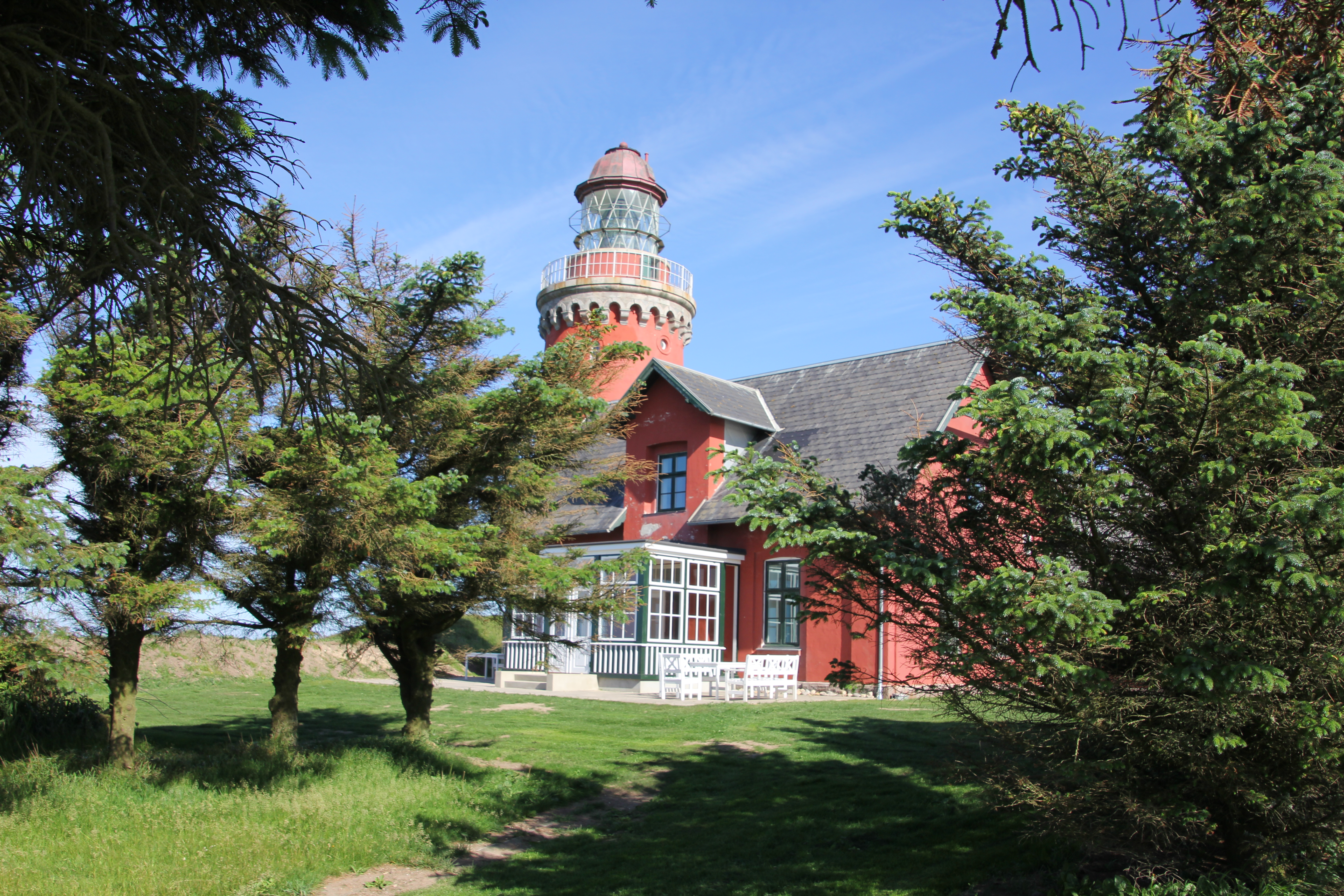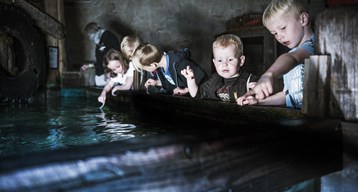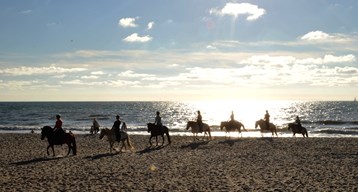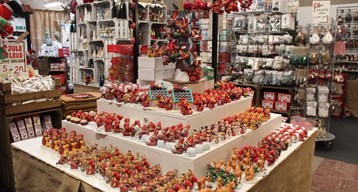Right on the edge of Bovbjerg Klint lies the characteristic red lighthouse, Bovbjerg Lighthouse. When it is dark, the lighthouse sends its light out over the sea. It flashes white twice every 15 seconds, but this has not always been the case. When it was first lit in 1877, it was with a living flame.
The lighthouse is part of the harsh history on Jutland's west coast. In the 19th century, most goods were transported by shipping, and the North Sea off Jutland was a highway of ships sailing with goods from all over the world. But it was a dangerous route. The conditions are insidious, the storms often ravage, and a myriad of strandings during the period made the west coast a particularly dreaded route and gave the area the nickname "The Iron Coast".
To improve safety at sea, lighthouses were built along the coast, so they could lead the sailors safely along the coast in the dark.

